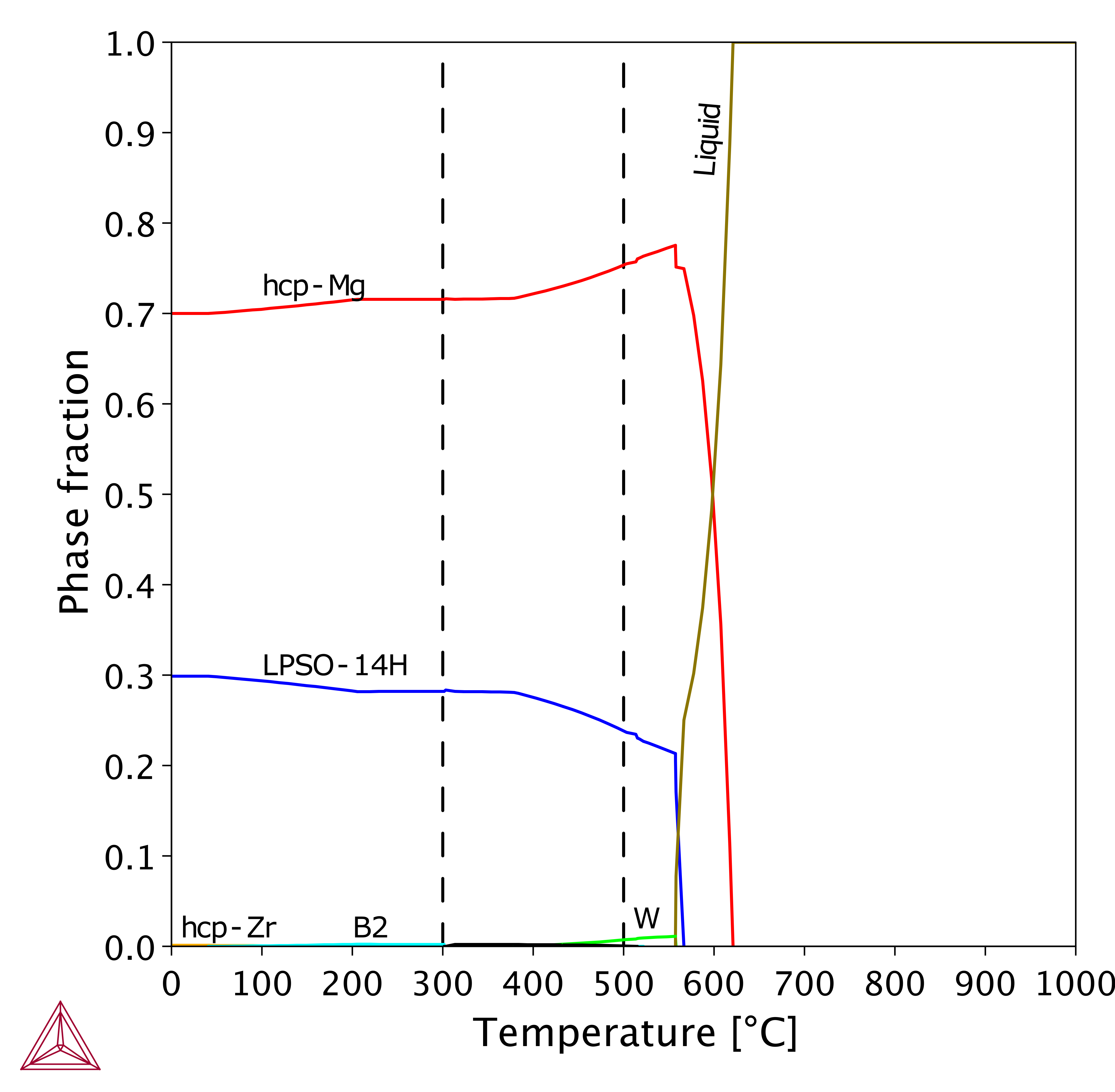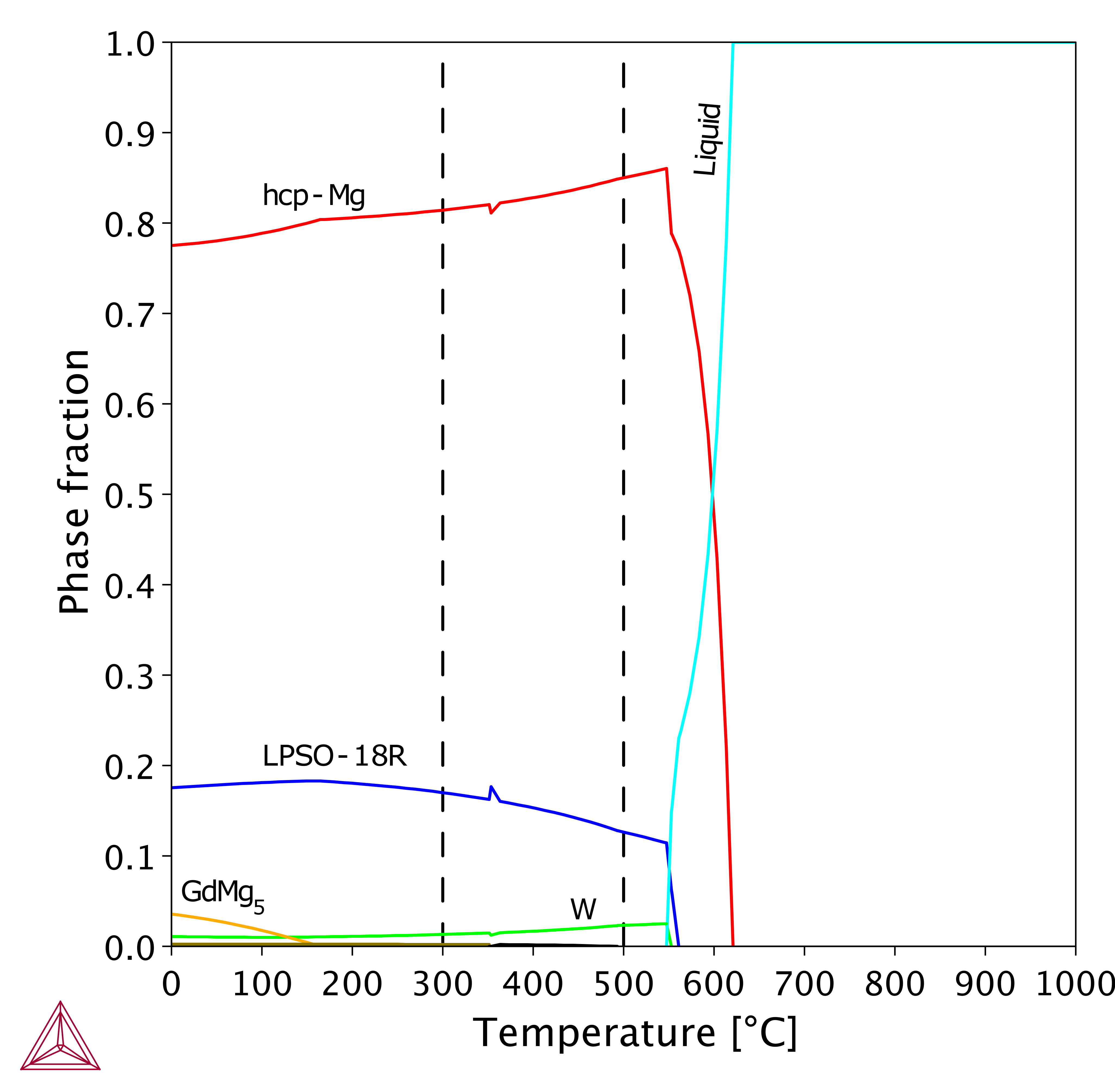Long-period Stacking-ordered (LPSO) Structures
You can use the TCS Mg-based Alloys Database (TCMG) to examine the long-period stacking-ordered (LPSO) structures.
Also see another example about LPSOs: Mg-Y-Zn(-Zr) Alloys.
Liu et al. [2016Liu] experimentally investigated the microstructure of Mg-7Y-4Gd-5Zn-0.4Zr (wt.%) using XRD, DSC, EDS, SEM, and TEM to analyze the microstructure. They annealed the alloy at 300 and 500 °C for 0.5, 5, and 10 h. They found that LPSO-18R precipitates in the Mg matrix in the as-cast state, while with increasing of the annealing time, LPSO-18R transforms to LPSO-14H. It results in substantial improvement of the hardness.
Thermodynamic calculation of the investigated alloy by Liu et al. [2016Liu] using TCS Mg-based Alloys Database (TCMG), versions 7 and higher, can be seen in Figure 1. This shows that LPSO-14H is the stable phase at the equilibrium condition. By suspending LPSO-14H, and redoing the calculation for the same alloy as shown in Figure 2, LPSO-18R appears, which is in good agreement with the results of [2016Liu].
The Mg24(Y,Gd)5 phase that was observed by the experimental work in an as-cast state was not stable in this example calculation. By suspending both the LPSO-14H and LPSO-18R phases, it becomes stable at temperatures lower than 300 °C.
Figure 1: Calculated phase fractions versus temperature for the Mg-7Y-4Gd-5Zn-0.4Zr alloy.
Figure 2: Calculated phase fractions versus temperature for the Mg-7Y-4Gd-5Zn-0.4Zr alloy by suspending the LPSO-14H phase.
Reference
[2016Liu] K. Liu, W. Du, S. Li, Z. Wang, The effect of heat treatment on microstructure of the melt-spun Mg–7Y–4Gd–5Zn–0.4Zr alloy. J. Magnes. Alloy. 4, 99–103 (2016).

